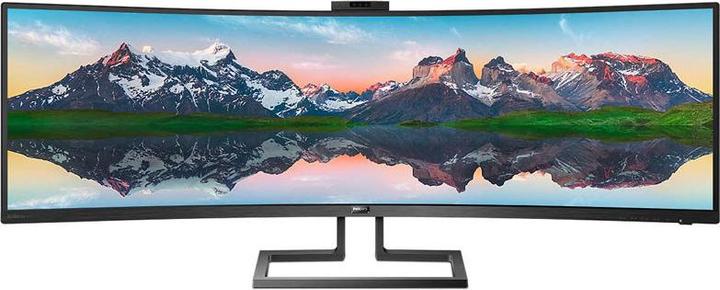
Philips 499P9H/00
5120 x 1440 pixels, 48.80"

Philips 499P9H/00
5120 x 1440 pixels, 48.80"
Hello community, has anyone had experience with this monitor with a Business Dell Latitude 5410 (with Intel UHD 620, i7-10610U)? How does the monitor behave when connected to such an on-board graphics solution vial USB-C? According to the Intel website, the following resolutions are supported by this graphics/processor: 4K Support: Yes, at 60Hz Max Resolution (HDMI): 4096 x 2304@24Hz Max Resolution (DP): 4096 x 2304@60Hz Max Resolution (eDP - Integrated Flat Panel): 4096 x 2304@60Hz So that doesn't necessarily sound like problem-free use of this monitor with 5120x1440 at 60Hz? Privately, I use a Huawei Matebook Pro X (i7-8550U) with Nvidia GeForce MX150, but I haven't found any information about supported resolutions. Then another question: What is the maximum throughput of the network adapter in the monitor? Does it reach 1 Gbit/s? Apparently you first have to activate USB 3 in the monitor to get more than 100 Mbit/s at all. Has anyone ever measured this? Or could someone measure it? Questions about questions... :-) Thanks and greetings
Hi,
I use the monitor with a Dell XPS-13 (Intel i7-1065G7 onboard graphics) via USB-C and it works perfectly, both resolution and Ethernet. However, there is a catch with the Gigabit Ethernet: The monitor is delivered in USB 2.0 mode by default - this allows you to achieve the promised 60 Hz at native resolution (70 Hz for me), but Ethernet is limited to ~ 300 Mbps. If you switch to USB 3.0 in the OSD, you can actually achieve 1 Gbps internet speed without any problems - but the refresh rate is limited to an unattractive 30 Hz. This is also stated in the official operating instructions (page 13). That's why I use WiFi again instead of Ethernet, because it gives me ~700 instead of ~300 Mbps in USB 2.0 mode and I don't have to do without 60 Hz. Conclusion: If you want this monitor, a refresh rate of 60 Hz and Gigabit Ethernet, you won't get around a separate USB-C docking station.